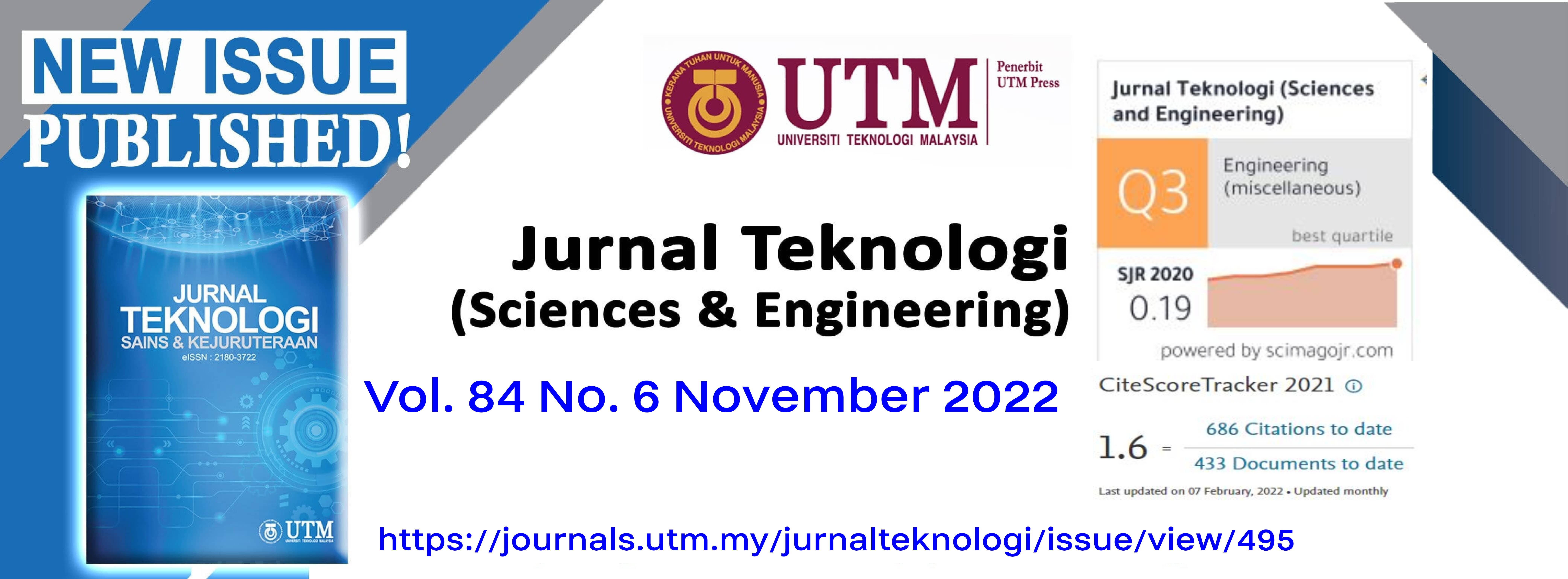QUALITY PREDICTION WITH NEURAL NETWORK TECHNIQUES FOR POLYPROPYLENE PRODUCTION VIA THE SPHERIPOL PROCESS
DOI:
https://doi.org/10.11113/jurnalteknologi.v84.18567Keywords:
Artificial Neural Network, Deep Learning, Melt Index, Polypropylene, Stacked Neural NetworkAbstract
In the polypropylene (PP) industry, melt index (MI) is the most important quality variable. Different grades of PP have their specific range of MI. Accurate prediction of MI is essential for efficient monitoring and off-grade reduction. Artificial Neural Network (ANN) models are proposed as the technique for MI estimation. It has powerful adaptive capabilities in response to nonlinear behaviour. In this research, ANN models for PP polymerization to predict the MI based on reactor parameters were developed. Three types of ANN models, the single hidden layer ANN (shallow ANN), stacked neural network (SNN) and deep learning are compared. The simulation results show that deep learning can perform better than shallow ANN and SNN by considering the accuracy of the prediction and detection of process fluctuation. All three model have proven that ANN are able to perform non-linear function approximation. Thus, ANN models are effective for supporting MI prediction such as for soft-sensors and process optimization in the polymer industry.
References
Xu, S. and Liu, X. 2014. Melt Index Prediction by Fuzzy Functions with Dynamic Fuzzy Neural Networks. Neurocomputing. 142: 291-298.
DOI: https://doi.org/10.1016/j.neucom.2014.03.056.
Kiparissides, C. 1996. Polymerization Reactor Modeling: A Review of Recent Developments and Future Directions. Chemical Engineering Science. 51(10): 1637-1659.
DOI: https://doi.org/10.1016/0009-2509(96)00024-3.
Li, J. and Liu, X. 2011. Melt Index Prediction by RBF Neural Network Optimized with an MPSO-SA Hybrid Algorithm. Neurocomputing. 74(5): 735-740.
DOI: https://doi.org/10.1016/j.neucom.2010.09.019.
Zhang, M. and Liu, X. 2013. A Soft Sensor based on Adaptive Fuzzy Neural Network and Support Vector Regression for Industrial Melt Index Prediction. Chemometrics and Intelligent Laboratory Systems. 126: 83-90.
DOI: https://doi.org/10.1016/j.chemolab.2013.04.018.
Zhang, Z., Wang, T. and Liu, X. 2014. Melt Index Prediction by Aggregated RBF Neural Networks Trained with Chaotic Theory. Neurocomputing. 131: 368-376.
DOI: https://doi.org/10.1016/j.neucom.2013.10.006.
Zhang, M., Liu, X. and Zhang, Z. 2016. A Soft Sensor for Industrial Melt Index Prediction based on Evolutionary Extreme Learning Machine. Chinese Journal of Chemical Engineering. 24(8): 1013-1019.
DOI: https://doi.org/10.1016/j.cjche.2016.05.030.
Jumari, N. F. and Mohd-Yusof, K. 2016. Comparison of Product Quality Estimation of Propylene Polymerization in Loop Reactors using Artificial Neural Network Models. Jurnal Teknologi. 78: 6-13.
DOI: https://doi.org/10.11113/jt.v78.9279.
Oostwal, E., Straat, M. and Biehl, M. 2021. Hidden Unit Specialization in Layered Neural Networks: ReLU vs. Sigmoidal Activation. Physica A: Statistical Mechanics and its Applications. 564: 125517.
DOI: https://doi.org/10.1016/j.physa.2020.125517.
Ramachandran, P., Zoph, B. and Le, Q. V. 2017. Searching for Activation Functions. arXiv preprint arXiv:1710.05941.
Li, H., Tang, X., Zhao, W. and Yang, B. 2021. Approaches to Deep Learning based Manipulating Strategy Reconstructions for Complex Chemical Processes. Journal of Process Control. 107: 127-140.
DOI: https://doi.org/10.1016/j.jprocont.2021.10.009.
Hubbs, C. D., Li, C., Sahinidis, N. V., Grossmann, I. E. and Wassick, J. M. 2020. A Deep Reinforcement Learning Approach for Chemical Production Scheduling. Computers & Chemical Engineering. 141: 106982.
DOI: https://doi.org/10.1016/j.compchemeng.2020.106982.
Agarwal, P., Tamer, M. and Budman, H. 2021. Explainability: Relevance based Dynamic Deep Learning Algorithm for Fault Detection and Diagnosis in Chemical Processes. Computers & Chemical Engineering. 154: 107467.
DOI: https://doi.org/10.1016/j.compchemeng.2021.107467.
Wang, Y., Wu, D. and Yuan, X. 2020. LDA-based Deep Transfer Learning for Fault Diagnosis in Industrial Chemical Processes. Computers & Chemical Engineering. 140: 106964.
DOI: https://doi.org/10.1016/j.compchemeng.2020.106964.
Debus, B., Parastar, H., Harrington, P. and Kirsanov, D. 2021. Deep Learning in Analytical Chemistry. TrAC Trends in Analytical Chemistry. 145: 116459.
DOI: https://doi.org/10.1016/j.trac.2021.116459.
He, Z., Tran, K.-P., Thomassey, S., Zeng, X., Xu, J. and Yi, C. 2021. A Deep Reinforcement Learning based Multi-criteria Decision Support System for Optimizing Textile Chemical Process. Computers in Industry. 125: 103373.
DOI: https://doi.org/10.1016/j.compind.2020.103373.
Fan, Z. and Xu, F. 2021. Health Risks of Occupational Exposure to Toxic Chemicals in Coal Mine Workplaces based on Risk Assessment Mathematical Model based on Deep Learning. Environmental Technology & Innovation. 22: 101500.
DOI: https://doi.org/10.1016/j.eti.2021.101500.
Niyomthai, T., Jongsomjit, B. and Praserthdam, P. 2017. Investigation of Alkoxysilanes in the Presence of Hydrogen with Ziegler-Natta Catalysts in Ethylene Polymerization. Engineering Journal (Eng. J.). 21(7): 171-180.
DOI: https://doi.org/10.4186/ej.2017.21.7.171.
Alshaiban, A. and Soares, J. B. 2012. Effect of Hydrogen, Electron Donor, and Polymerization Temperature on Poly (Propylene) Microstructure. Macromolecular Symposia. 312(1): 72-80.
DOI: https://doi.org/10.1002/masy.201100023.
Funes, E., Allouche, Y., Beltrán, G. and Jiménez, A. 2015. A Review: Artificial Neural Networks as Tool for Control Food Industry Process. Journal of Sensor Technology. 5(01): 28.
DOI: https://doi.org/10.4236/jst.2015.51004.
Hagan, M. T., Demuth, H. B., Beale, M. H. and De Jesús, O. 1996. Neural Network Design. Pws Pub. Boston.
Mukherjee, A. and Zhang, J. 2008. A Reliable Multi-objective Control Strategy for Batch Processes based on Bootstrap Aggregated Neural Network Models. Journal of Process Control. 18(7): 720-734.
DOI: https://doi.org/10.1016/j.jprocont.2007.11.008.
Qazi, N. and Yeung, H. 2014 Modeling of Gas–liquid Separation through Stacked Neural Network. Asia-Pacific Journal of Chemical Engineering. 9.
DOI: https://doi.org/10.1002/apj.1777.
Debus, B., Parastar, H., Harrington, P. and Kirsanov, D. 2021 Deep learning in analytical chemistry. TrAC Trends in Analytical Chemistry. 145: 116459.
DOI: https://doi.org/10.1016/j.trac.2021.116459.
Dubey, S. R., Singh, S. K. and Chaudhuri, B. B. 2022 Activation Functions in Deep Learning: A Comprehensive Survey and Benchmark. Neurocomputing. 503: 92-108.
Downloads
Published
Issue
Section
License
Copyright of articles that appear in Jurnal Teknologi belongs exclusively to Penerbit Universiti Teknologi Malaysia (Penerbit UTM Press). This copyright covers the rights to reproduce the article, including reprints, electronic reproductions, or any other reproductions of similar nature.
















